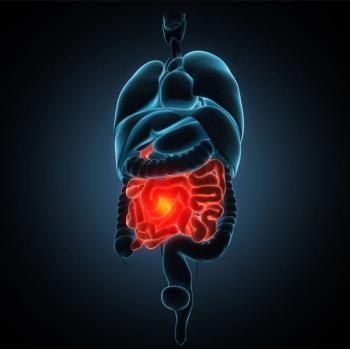
Measuring Treatment Response in Patients With IBD
Recommendations when assessing response to biologic therapies used to treat ulcerative colitis and Crohn disease.
Episodes in this series

Joseph Feuerstein, MD: Dr Ungaro, although we have all these different treatments, how do you actually measure a patient’s response to therapy?
Ryan Ungaro, MD: This is something that has evolved over time. Years ago, and still currently to some degree, you’d have a patient started on a therapy, they’d tell you they felt better, and you’d say, “OK, great. We’re done. You’re feeling better, so we can say you’re a success with this treatment.” But what has been appreciated more, particularly in more recent years, is that there can be a discordance between symptoms and objective metrics of inflammation. While patient-reported outcomes regarding their symptoms, like abdominal pain, diarrhea, and rectal bleeding, are obviously very important and are one of our treatment goals and one way we measure success, we realize that alone is not enough and that we need to pair that with objective metrics of inflammatory measurements.
In addition to patients feeling better, we also want to look at their inflammation markers. We’re not going to be doing a colonoscopy on our patients every few weeks, so in addition to the symptoms, we typically pair that with noninvasive metrics of inflammation, including blood markers, such as CRP [C-reactive protein] and ESR [erythrocyte sedimentation rate], and stool markers, such as fecal calprotectin, and measure these early after starting a patient on an agent. Typically, we’re checking this within the first 1 to 3 months and making sure inflammation markers are getting better, as well as patients’ symptoms. These are intermediate targets. Then looking at our ultimate target of healing the bowel, objectively viewing the bowel with a colonoscopy, or sigmoidoscopy in ulcerative colitis, is often sufficient. Within 6 to 12 months of starting a new therapy, we’d be checking a colonoscopy to assess that the endoscopic lesions that were there before starting a treatment are improving.
In Crohn disease, sometimes we’ll also couple the colonoscopy with repeat imaging study, MRI or CT scan, to also look for resolution or improvement radiographically of inflammation. It’s really this 2-fold target where you’re looking at patient symptoms, but also pairing that with objective metrics of inflammation.
Joseph Feuerstein, MD: Thank you. Dr Hanauer, many of you have briefly mentioned some of the complications of the biologic therapies, but what would you say are the most common complications that people should be aware of? How might you manage those?
Stephen B. Hanauer, MD: I begin with stating that we haven’t yet discussed corticosteroids. Steroids really are a bridge therapy to the advanced treatments of the biologics and oral agents that we just discussed, so we need to keep in mind that many patients with moderate to severe disease will be exposed to corticosteroids, which really are the most risky drugs—although we don’t consider it that way—as far as infections and in death in the setting of inflammatory bowel disease. Steroids require their own monitoring of all of the systemic effects that primary care physicians are familiar with, including diabetes, hypertension, and osteoporosis.
The advanced therapies that we just discussed have many aspects in common and slight differences. One of the most important is the risk of infection. Any of our patients who are going on to the advanced therapy of biologics or ozanimod or tofacitinib we put into the same category. Those individuals need to be evaluated for exposure to tuberculosis with usually a QuantiFERON test and/or chest x-ray or skin testing, and they need to be evaluated for hepatitis B, because these therapies can increase reactivation of hepatitis B. Then we initiate the common vaccinations for patients, including influenza on a yearly basis, all age-appropriate vaccines, and then most specifically, pneumonia. Pneumococcal vaccinations are important for these patients. And then as Dr Sands mentioned, some are associated with an increased risk of zoster. The newer shingles vaccine is important for patients who are going to be treated with ozanimod, and probably in the future with all of the biologic therapies.
Transcript edited for clarity.
Newsletter
Enhance your clinical practice with the Patient Care newsletter, offering the latest evidence-based guidelines, diagnostic insights, and treatment strategies for primary care physicians.
















































































































































































































































































